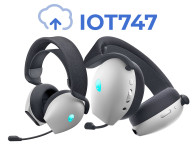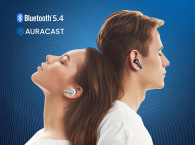As all product managers know well, if you are aiming to have highly sophisticated electronics products on the market for the holiday season - a broadening definition that extends from Black Friday in November 29, until the Chinese New Year (Lunar New Year), in January 29, 2025 - you must be seeing those products rolling off of the production lines right now. If you are working on that innovative new product development now, you are likely targeting 2026 as the year your products go to market.
[This might change slightly depending of the product category, but you would have the be a very larger player, and have a lot of control over your production chain to bend that calendar.]

Since I did an interview with Chuck Sabin earlier this year - discussing the roadmap for Bluetooth LE Audio and Auracast, and how the Bluetooth SIG was seeing the evolution of product development - the organization has been very proactive about making available more resources for audio developers. Many of these resources had been delayed by the pandemic and then prolonged by the work required in advancing technologies and specifications.
In the Bluetooth SIG website, we can now find lots of new resources and guidance, including the "For Developers" tab, which includes step-by-step guides and developer best practices. Downloadable documents, some lighter than others, include "The Auracast Simple Transmitter Best Practices Guide", "Developing Auracast Receivers with an Assistant Application for Legacy Smartphones", "An Overview of Auracast Broadcast Audio", "How to Design Auracast Earbuds", "How to Build an Auracast Transmitter", and "How to Build an Auracast Assistant". All valuable resources that are as useful for a brand as they are for ODM/OEMs who have also been struggling to complete the puzzle in the updated Bluetooth and LE Audio specifications.
Curiously, the "LE Audio Resources for Developers" in the Bluetooth SIG website repeats most of the Auracast resources I just mentioned. Simply because, at this stage, the SIG assumes that Auracast is the main motivator to update a design to support Bluetooth LE Audio. Otherwise, you are left with videos of Nick Hunn explaining what the specification documents contain, for the despair of the many engineers responsible for their companies’ efforts with this technology update and migration roadmap.

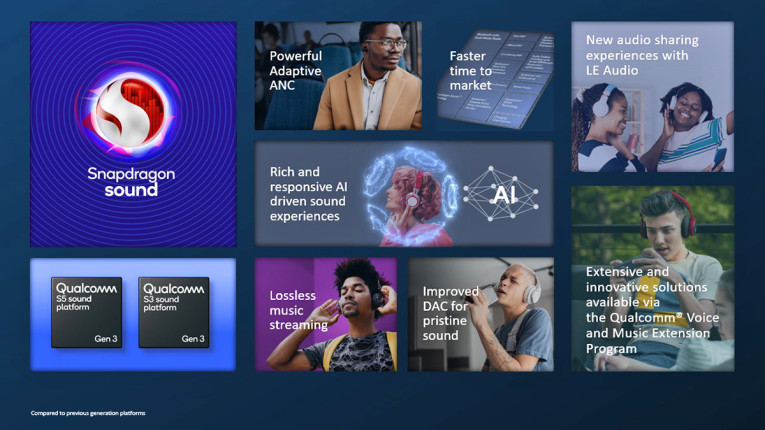
And on this article I would like to address a simple question that I have received a few times. Which is about the calendar for LE Audio (and Auracast). Many companies are increasingly feeling the fear of missing out (FOMO) or afraid to being late to the game. For those, I normally say: Calm down. You have plenty of time. You don't need to be the first - no one wants to be the first. Just do it well.
On topic of the Bluetooth LE Audio calendar, you better not ask chatGPT. Because the SIG already anticipated that question in their website FAQ, where they state "product availability will ... ramp up as we approach the holiday season and end of the year."
Smart. That was true last year. It still is true this year. And it will remain true next year. Actually, that reply is specific to the question: When do you expect products with Auracast broadcast audio to reach consumers? Not specific to LE Audio, which is "the engine" required for any Auracast product.
In the same FAQ, the Bluetooth SIG also answers the all-important question about "What version of Bluetooth technology is required to implement Auracast broadcast audio? And they clarify: "Technically, for any product to support Auracast broadcast audio it must support specific features that were introduced in version 5.2 of the Bluetooth Core Specification as well as the Public Broadcast Profile within the set of LE Audio specifications."
As always, not very reassuring for the marketing teams that have received the mission to promote a brand's newest wireless earbuds model scheduled for the "holiday season" and are told to emphasize that the product is already Bluetooth 5.4. It's understandable they would ask product managers about Auracast. And right now, most are told it will come with a future software update.
The problem is, the marketing teams check the selling points of the new product, and they need something new, and audio sharing and Auracast in general seem like a good idea. They don't know about LE Audio and don't actually care. But Auracast seems to be in the top feature list for new products to be launched at this time.
[There's also something about "a new codec" LC3, that extends battery life apparently... but they are told not to say too much about it. It just distracts from the need to promote the other lossless and hi-res codecs that are supported in the new model.]
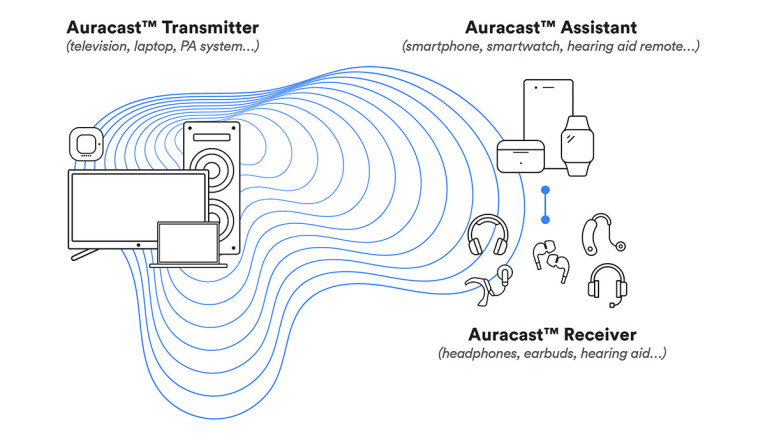
This is currently a big dilemma for anyone working on launching and promoting new products. Should you include a technology that has already generated a noticeable buzz among consumers, but is yet to become generally available? Because as the Bluetooth SIG knows too well, this calendar will be dictated basically by operating systems and device updates. And although Bluetooth LE Audio support is already becoming available in Android 13 devices (which allowed for the Google Pixel and Samsung devices used in the early demos), broader adoption of Bluetooth LE Audio in the devices is yet to happen. Some devices have the hardware to support it, but manufacturers are scheduling software updates to activate it at a later stage, since compatible earbuds and headphones are still not available to consumers.
In fact, manufacturers who have been proactive in activating Auracast support in actual shipping products - such as Harman boldly did with their latest generation of Bluetooth speakers - are facing the reality that those features are not being recognized by consumers. Although, I believe that the question that needs to be asked is, how many bought those products because they like to see Auracast as one of the features? It certainly helps to reassure buyers that the product will not be obsolete next year - and in speakers that is a consideration.
Products supporting Bluetooth LE Audio, speakers, headphones and earbuds are shipping now. But with the exception of the JBL speakers that are using Auracast to create a party mode, there aren't many opportunities to experience the technology. Even with JBL speakers you need to have at least three or more speakers to try that, and that's not often (for stereo pairing you don't need Auracast). Also, other wireless speaker brands have been promoting the possibility to engage Party mode with multiple wireless speakers by using other technologies (e.g. SKAA).
It's August 2024, and all the headphones and earbuds in the market advertising LE Audio and Auracast support are yet to activate those features, promising an upcoming software update. So, the general situation in 2024 is a typical "chicken and egg" scenario, where everyone is waiting for everyone else.
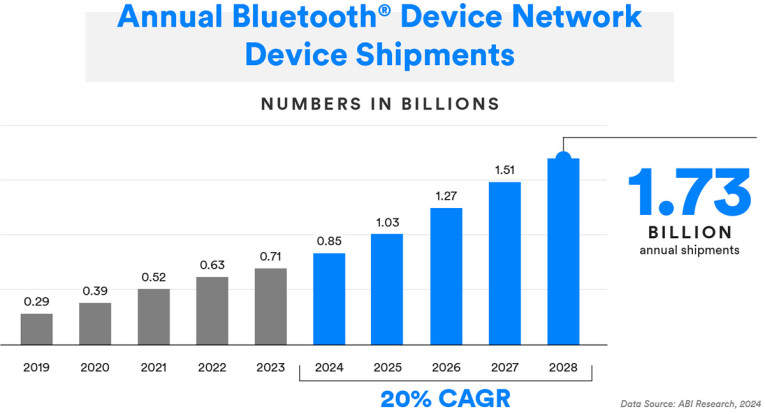
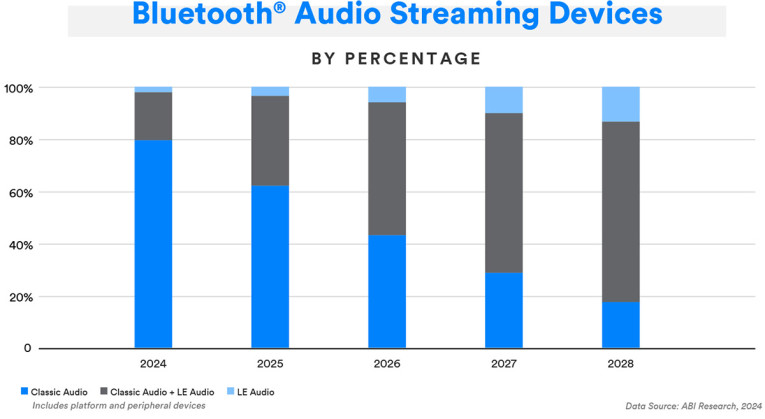
Will those firmware updates be unleashed in time for the 2024 "holiday season"? Well, it's not only Android support that's available. Bluetooth LE Audio support is available in Windows 11 and Microsoft seems to be committed to push the new audio standard to the PC ecosystem. But again, also in that space it seems like everyone is waiting for more compatible receiving devices to become available. And everyone in the industry knows, that decisive moment will be greatly triggered by "the other" company making its move. As Jason Hillyard from Packetcraft previously wrote in 2023 we are looking increasingly at 2025 as the year we can expect Apple to make such a move.
So, that more or less determines the calendar. The rest depends upon a lot of technical work and even technology specifications that are still required to become part of the standard (such as the method for multiple Auracast transmitters to ensure coverage in complex interiors, and for Auracast receivers to switch seamlessly from one to another while listening to the same broadcast stream).

The Bluetooth SIG has been working with market research and technology advisor firm ABI Research in creating a great series of documents to helo the industry navigate the evolution of Bluetooth technology. That includes an excellent report on "Auracast Broadcast Audio Retrofit Solutions and Opportunities" that explores the various hardware options and solutions tailored to specific use cases and estimates its market potential.
On a more recent update (June 2024), ABI Research predicted optimistically that Bluetooth LE Audio and Channel Sounding, among other future innovations will generate a "tangible increase in demand in the consumer Bluetooth market by the end of 2024." It is now clear that any growth in demand (which is happening) is not due to either LE Audio or Auracast, but simply by the excitement and growing consumer awareness of the features available in the category, and a growing number of form-factors such as open-ear design.
ABI also estimates that demand will reach 4.7 billion Bluetooth-enabled device shipments in 2028, with LE Audio applications being a major contributor to that growth.
I like that estimate and the implicit roadmap. 2028 is now less than four years away. And that makes sense as the year when LE Audio will be pervasive and Auracast use cases - consumer and assistive/augmented listening - will become mainstream. Because if we look at the technology availability and product development cycles, everyone will need that time. I also predict that a lot of the new AI-based features, which are already among the things that both developers and product managers will want to prioritize, will require significant efforts to be implemented on the edge.
Until then, it's all a question of managing that delicate balance between expectations that technology will drive the market, and offering the features that motivate consumers - or not. Also, delivering a good user experience in that transition will be crucial.
audioXpress intends to address those trends and more in its Wireless Audio Market Update in the December issue, while expanding further details into products in the January and February issues, all available before CES 2025.
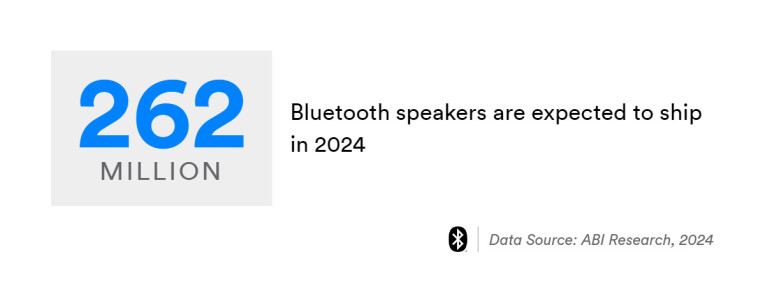

This article was originally published in The Audio Voice newsletter, (#479), August 8, 2024.





